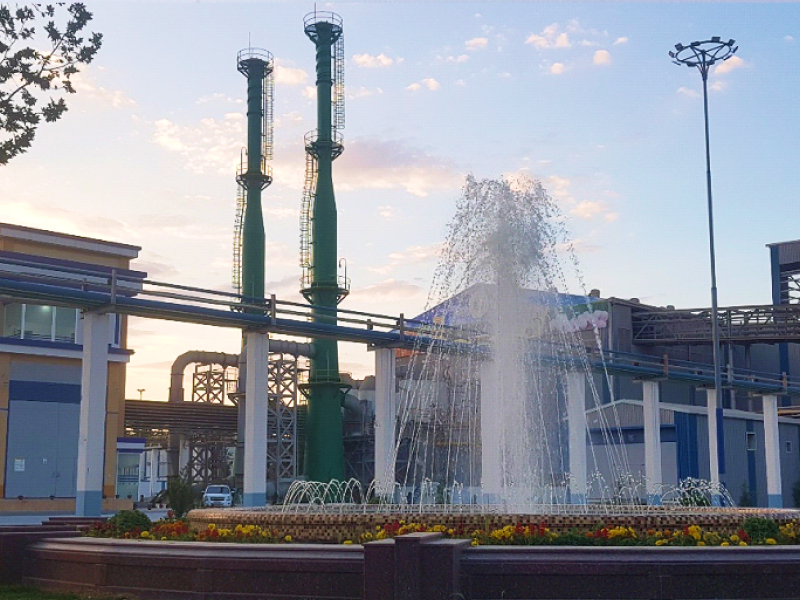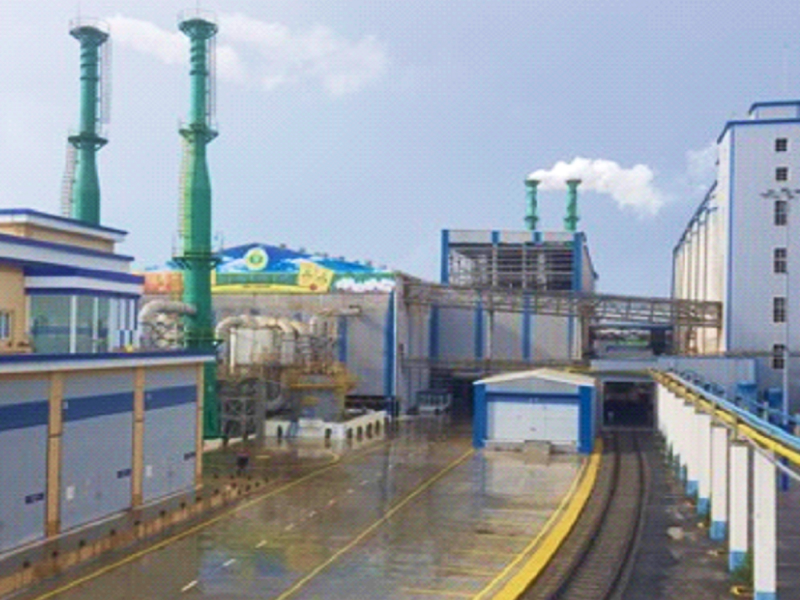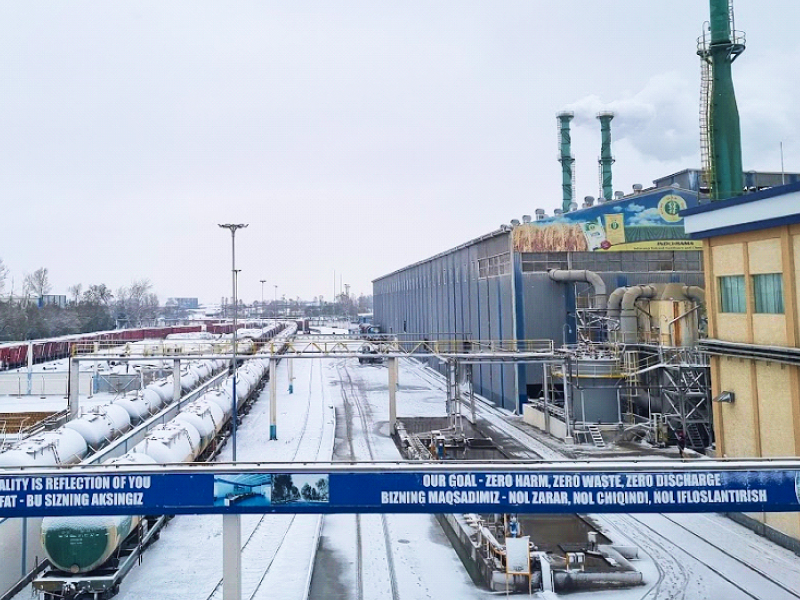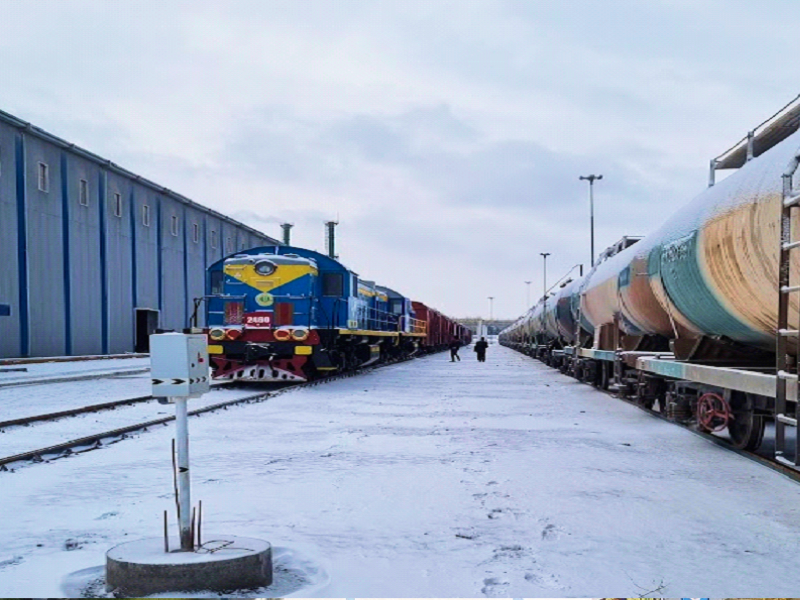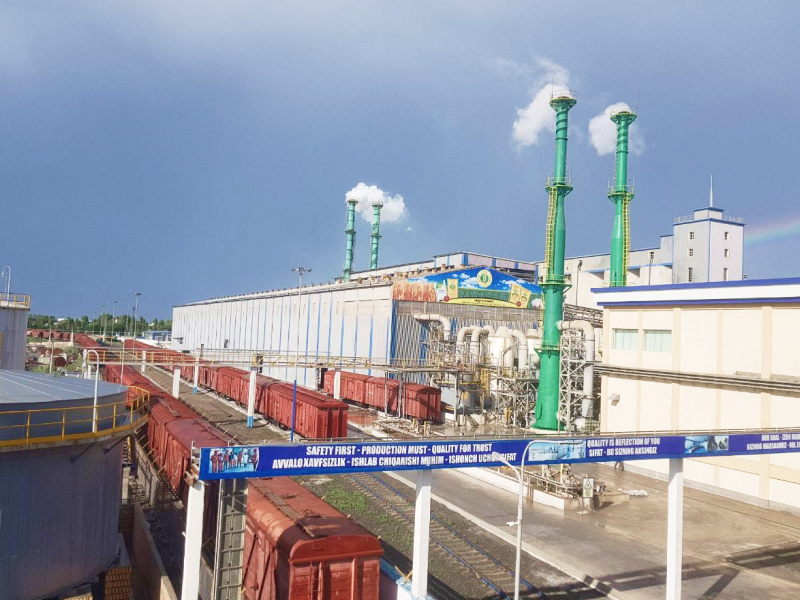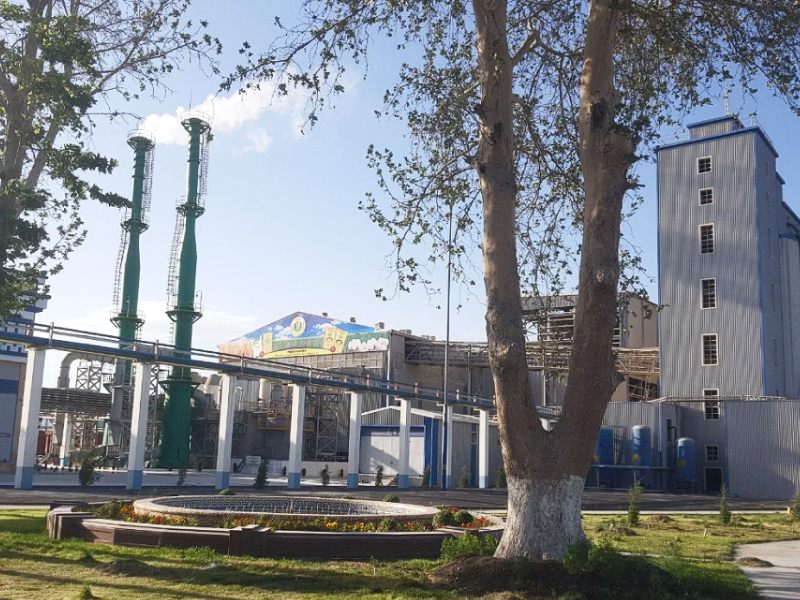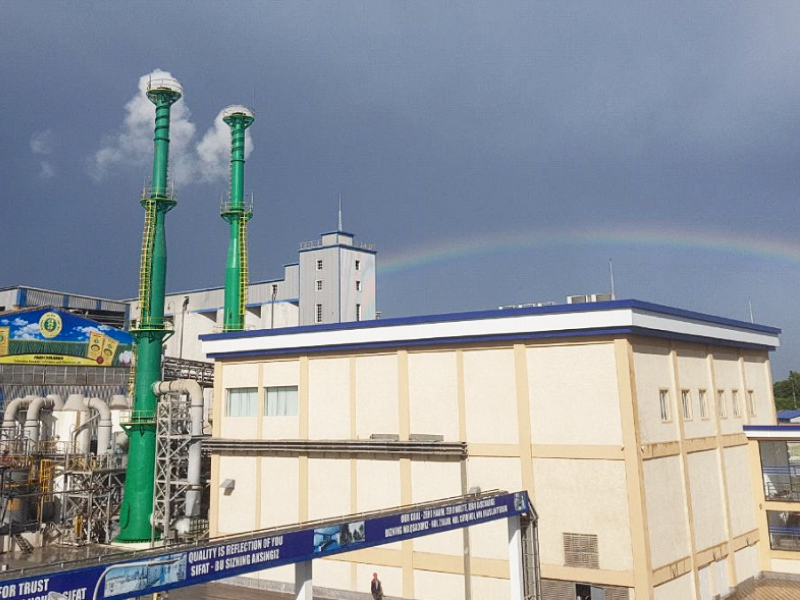AFFILIATED COMPANIES

JSC Indorama Kokand Fertilizers and Chemicals
UzbekistanJSC Kokand Superphosphate was acquired in June 2019 through a public disinvestment and privatization process. The original manufacturing site was established in 1935 to produce Ammoniated Single Super Phosphate (ASSP) with a nameplate capacity of 250,000 MT per annum.
Following the acquisition, Indorama embarked on an extensive modernization and turnaround program and has increased the production capacity to 350,000 MT per annum of Single Super Phosphate (SSP) and 290,000 MT per annum of ASSP in February 2021.
In Nov’ 2021, IKF has further expanded it’s product portfolio and started production of different grades of granular NPKs such as NPK 15:15:15+7S+0.1Mgo, NPK 16:16:16+7S+0.1Mgo, NPK 20:10:10+11S+0.1Mgo, NPK 8:20:25+1S+0.1Mgo, NPK 12:11:18 +11S (SOP), NPK 7:22:14+5S+0.3 Mgo.
In Dec’2021, IKF has further expanded it’s product portfolio and started production of different grades of water soluble NPKs such as NPK 5:25:0+5S+ 5Zn+3Mgo, NPK 8:35:0+2S 5Zn+1Mgo, NPK 16:16:16 etc.
IKF has exported NPK and ASSP in more than 15 countries including Poland, Estonia, Romania, Ukraine, Latavia, Georgia, China, Magnolia, Thailand, Turkmenistan, Afghanistan, Tajikistan etc.

JSC Indorama Kokand Fertilizers and Chemicals
Uzbekistan| Production Capacity of SSP | 350KTA |
| Production Capacity of ASSP/NPK | 290KTA |
| Production Capacity of WS | 1095 Tons/Year |
| Key Raw Materials | Sulphuric Acid, Rock Phosphate, Ammonia, Potash (KCL), Amofos, Ammonium Sulfate, Urea and Sulphate of Potash (K2SO4), Potassium Nitrate, Boron etc. |
| Total Employees | 514 |
| Plant commissioned Year | 1935 |
| Plant Acquired Year | 2019 |

JSC Indorama Kokand Fertilizers and Chemicals
UzbekistanSingle Super Phosphate (SSP) Manufacturing Process
There are two production lines to produce SSP. The key raw materials for production of SSP are concentrated sulphuric acid and ground rock phosphate. Both the raw materials and water for dilution are allowed to react in a paddle mixer. As the reaction is exothermic in nature, the temperature of the reaction mixture increases to about 110°C. In the mixer, about 70% of the reaction takes place and takes 3 to 4 minutes. The next reaction is carried out in a slow moving slat conveyor called Den. Here the reaction time is allowed 40 to 45 minutes and about 90% of the reaction is completed. The mostly lumpy material discharged by the Den is cut by a cutter before being allowed for storage. The last 10% of the reaction occurs during storage and the reaction rate here is extremely slow. This stage, called Curing, takes about a month to finish. To enhance the rate of curing, the storage heaps are reshuffled time to time by using a grab crane. The cured product meets the desired quality parameters such as WS P2O5 %, Free Acid, and moisture content.
During reaction, there is evolution of gases consisting mostly of HF, Water vapour, and SiF4. The same is scrubbed by passage through a three stage ventury scrubber. The scrubbed liquor is recycled back to the mixer for dilution purposes or used in the ASSP plant for granulation. All the process parameters are monitored and controlled by a DCS.
Ammoniated Single Super Phosphate (ASSP) Manufacturing Process
There are two production lines to produce ASSP. Cured SSP is fed to the granulation plant through a Lump Breaker and fed to the Granulator through a Feed Belt Conveyor. In the Granulator drum, water is sprinkled and ammonia gas is passed to neutralize free acid present in cured SSP. Granules are formed as a result, which are fed to the Dryer Drum, where the granules of Ammoniated SSP are heated by hot air generated through a Natural Gas fired furnace. After heating, the moisture content in the granules is reduced to 5%. The hot granules are then sent to a double deck vibrating screen for physical separation. Oversized granules are separated from the top deck of the screen and are crushed by a chain mill and recycled back to the Granulator along with undersized granules which are separated from the bottom deck of the screen.
Granules (sized from 2 mm to 4 mm) have temperature of 70°C and are sent to a rotary drum cooler for cooling down to 40 °C. Then, the product is either sent directly to the packing plant for packing into 50 kg bags or directly into wagons. ASSP dust emitted during the screening, transfer, and chain mill processes are recovered through bag filters and remaining ammonia from the Granulator is scrubbed in a ventury scrubber. The dust generated inside the dryer drum is recovered in cyclones and a wet ventury scrubber, and then recycled in the Granulator. All the process parameters are monitored and controlled by a modern DCS.
NPKManufacturing Process
Granulation unit Line 2 is used for NPK production. Raw materials for NPK production is stored in hoppers and weighing by weigh feeder in balanced ratio. The balanced weighed feed is then crushed in crusher and mixed in pugmill, to form uniform mixture. This mixture feed is than fed to the Granulator through a Feed Belt Conveyor. In the Granulator drum, water is sprinkled along with steam and ammonia gas. Granules are formed as a result, which are fed to the Dryer Drum, where the granules of NPK are heated by hot air generated through a Natural Gas fired furnace. After heating, the moisture content in the granules is reduced to 2%. The dried granules are then sent to a double deck vibrating screen for physical separation. Oversized granules are separated from the top deck of the screen and are crushed by a chain mill and recycled back to the Granulator along with undersized granules which are separated from the bottom deck of the screen.
Granules (sized from 2 mm to 4 mm) have temperature of 70 °C and are sent to a rotary drum cooler for cooling down to ambient temperature. The rotary cooler drum is cooler and coating drum, in which after cooling anticaking agent & colour (if req.) coated on NPK granules. Then, the product is either sent directly to the packing plant for packing into 50 kg bags or 500 kg Jumbo bags or as per customer requirements. NPK dust emitted during the screening, transfer, and chain mill processes are recovered through bag filters and remaining ammonia from the Granulator is scrubbed in a ventury scrubber. The dust generated inside the dryer drum is recovered in cyclones and a wet ventury scrubber, and then recycled in the Granulator. All the process parameters are monitored and controlled by a modern DCS.
Please click here Process Flow Diagram for SSP,ASSP& NPK


